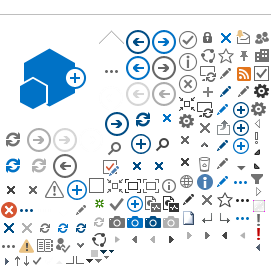Can you tell us more about your placement?
I have been undertaking my graduate placement with the Systems Engineering Group at RAL Space. During this time, I have worked as part of the Systems Engineering Team working on the European Space Agency's (ESA) Ariel mission. RAL Space is leading the Mission Consortium for Ariel, so there is a very large group of staff across the department working on this project.
The goal of Ariel is to study the chemical composition of over 1000 exoplanet atmospheres over four years. The Ariel telescope will observe exoplanets passing in front of distant stars and analyse any signals it receives using a range of instruments.
Why did you choose to complete a placement with RAL Space?
The STFC Graduate Team encourages all second-year graduates to take part in a 3-month placement with another STFC department or external institute. This can be a great opportunity to further develop skills you wouldn't usually be exposed to in your day-to-day job.
I heard about the Ariel Systems Engineering Team through the Graduate's Teams channels and decided to express my interest in doing my placement with them. I then moved from Daresbury Laboratory to RAL in September.
What project have you been working on at RAL Space?
As mentioned before, the Mission Consortium for Ariel is being led by a multi-disciplinary team across RAL Space, and the payload's Assembly, Integration and Testing (AIT) campaign is expected to begin at RAL Space in 2023. This is incredibly important for the success of the mission since it will not be possible to send anyone to fix it once it's launched!
My work has involved investigating the Electronic Ground Support Equipment (EGSE) we will use to test the payload during the AIT campaign. I have produced a range of documents, including behavioural models for specific test sequence scenarios, which are important because they inform test operators how the EGSE is expected to behave during each particular test.

Artist's impression of the Aerial satellite. Image credit: ESA/RAL Space/UCL/UK Space Agency/ATG Medialab
What have you learned while on your placement?
So many things! Most importantly, I have learned a great deal about the scope and magnitude that space missions such as Ariel have across the European space industry. Being involved with the Ariel Systems Engineering Team has also allowed me to witness first-hand the complexity of the project, how it's managed, and how it develops over time. It has been a truly unique experience.
In terms of my technical skills, all the documents I have worked on as part of my systems engineering placement apply to any kind of electronic system, so everything I have learned will be transferrable towards my future work at Daresbury Laboratory.
Have you enjoyed it?
Absolutely! From day one the Ariel Systems Engineering Team were very inclusive and welcoming, and I was always encouraged to sit with them in their regular meetings with ESA and the other Ariel Mission Consortium representatives across Europe. It has been a fantastic opportunity to contribute to such a high profile project, and reading about the importance of the mission in the news highlighted the relevance of the work that I was doing.
On a technical level, the Systems Engineering Group have been very supportive in helping me learn all the new concepts I had to capture in my work. They were frequently available to help me solve any problems I encountered and to explain to me the intricacies of the system I was investigating. I recommend pursuing a graduate placement, especially with the Systems Engineering Group at RAL Space. Overall, I have really enjoyed the experience, and I am very grateful for this opportunity.

Sofia Fuster on her graduate placement at RAL Space. Image credit: STFC RAL Space
